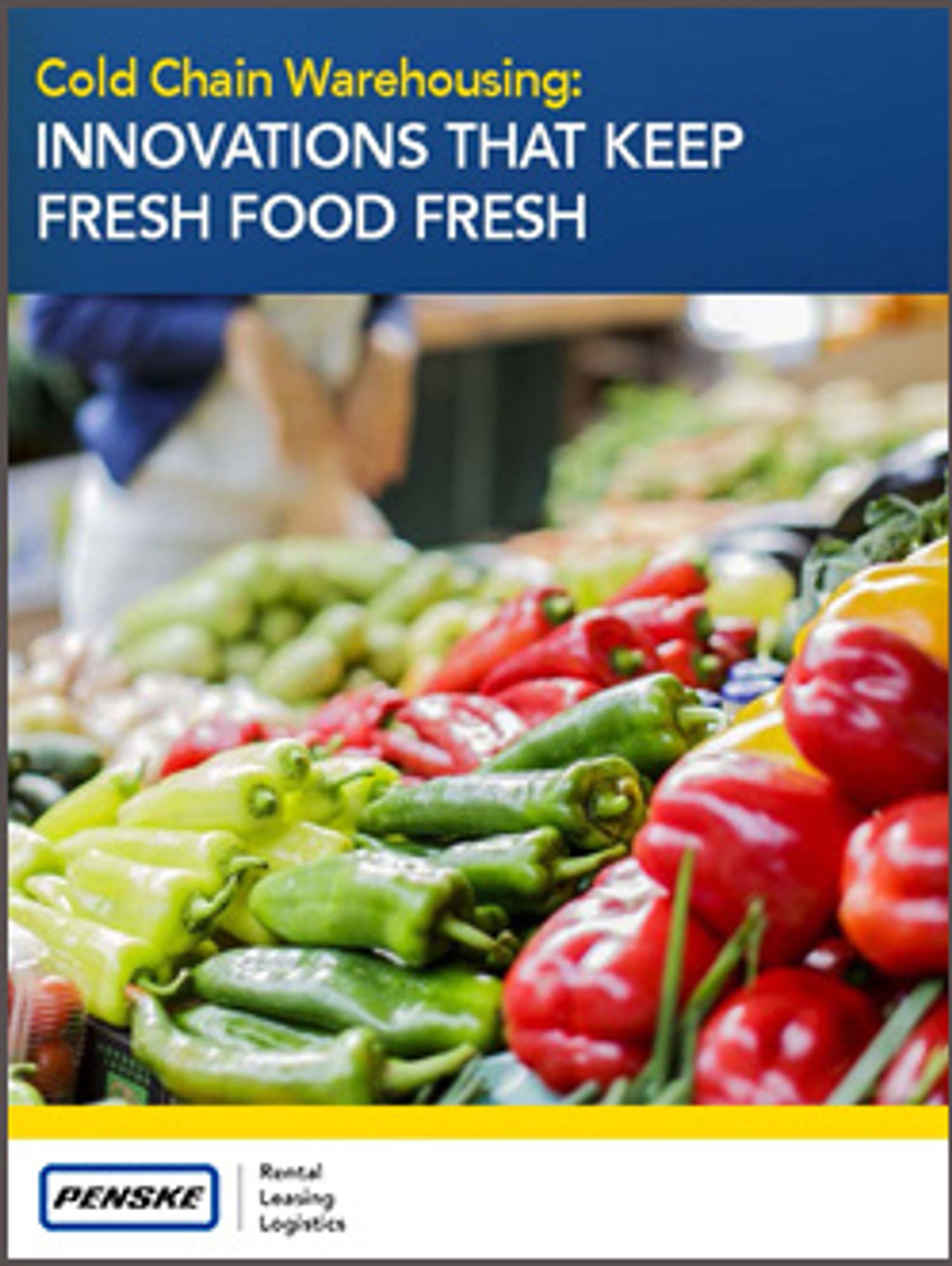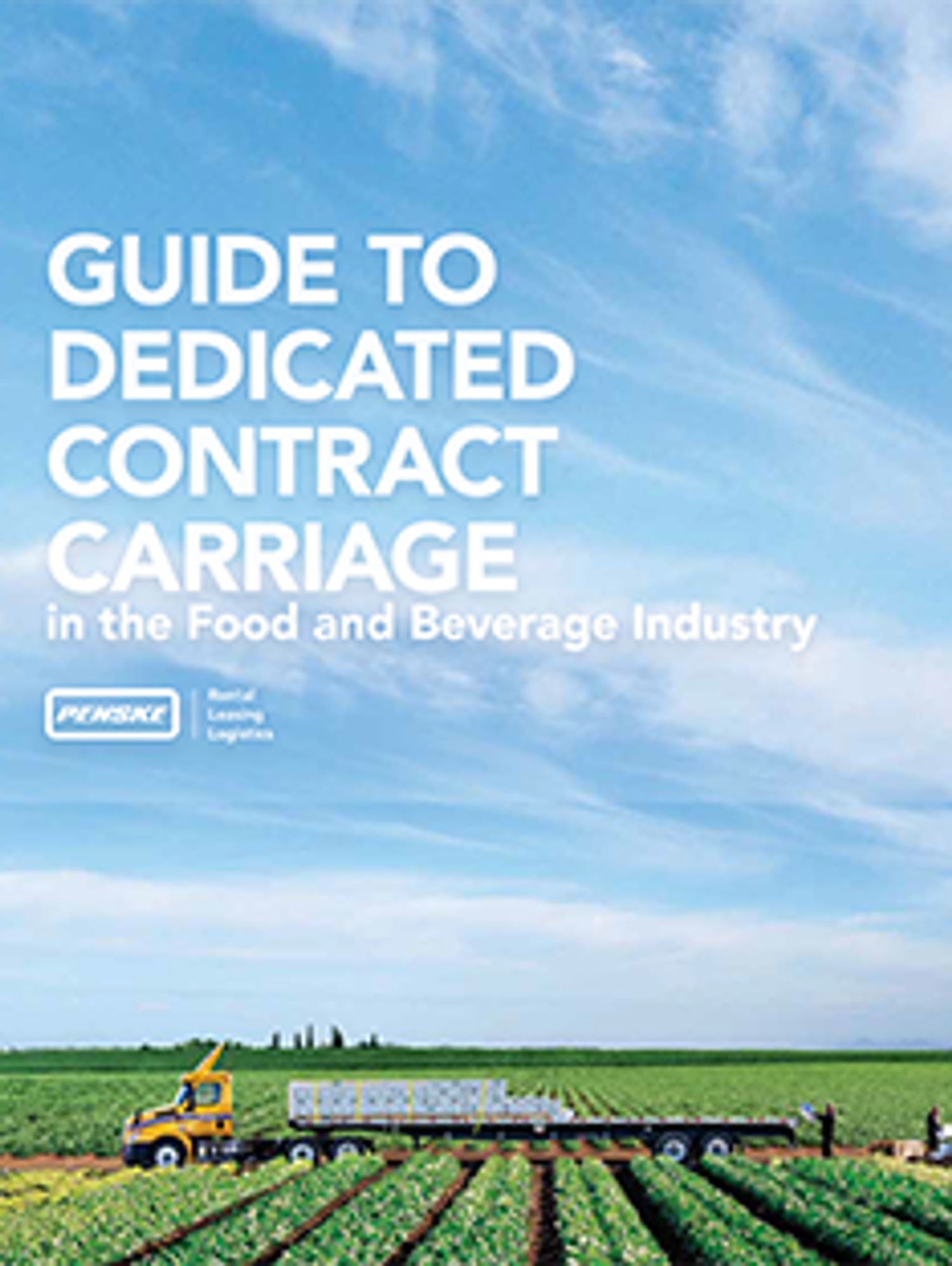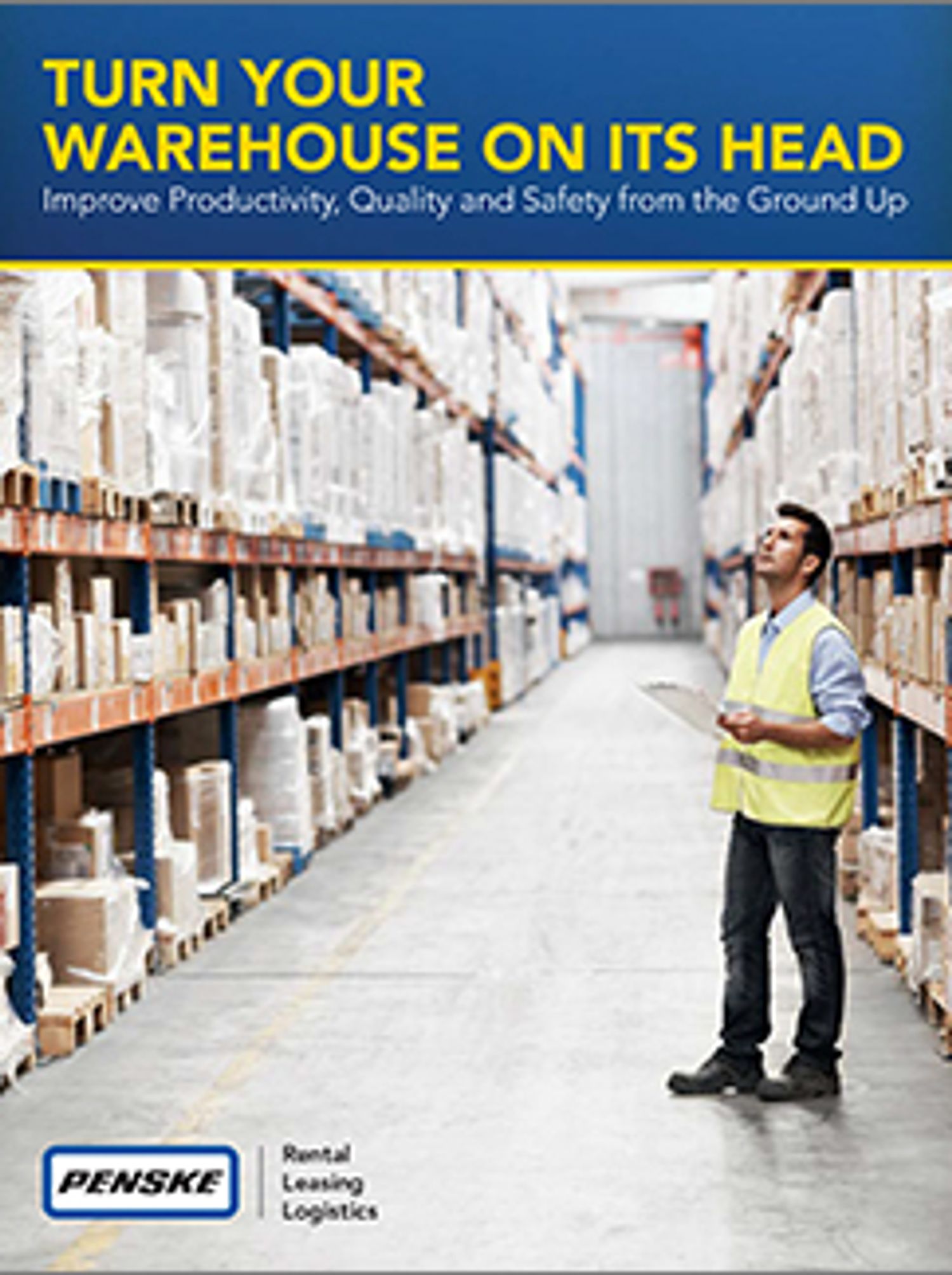Seven Questions to Ask a Food Logistics Provider
Learn how to ensure an uninterrupted, successful food supply chain

Supply chain operations are always complex, and each link in the chain must operate as planned to avoid disruptions. The food and beverage supply chain brings even greater complexities that must be managed to ensure overall success.
High consumer demands, just-in-time inventories and increasing government regulations are intensifying the transportation demands for food and beverage providers. Finding the right logistics partner is crucial to ensuring products arrive on time and as specified.
Here are seven questions you should ask your transportation and logistics partners to ensure an uninterrupted, successful supply chain.
How do you handle supply chain fluctuations or disruptions?
Contingency planning is a key element within any supply chain. It takes on even greater importance within the food and beverage industry, which is vulnerable to weather and agricultural conditions. Shippers must sometimes shift their sourcing and routing of products with very little notice to ensure real-time supply and just-in-time deliveries.
What's more, within some segments of the food and beverage industry, volumes can spike during seasonal promotions, the holidays, or ahead of severe weather. That means shippers' transportation needs can shift quickly, as can available capacity.
You need a logistics partner that can minimize disruptions and flex rapidly. In addition to having its own fleet, Penske works with a network of over 15,000 carriers and adds new carriers daily — ensuring available capacity whenever shippers must respond to a seasonal surge, a change in suppliers, a large storm or a natural disaster.
Supply chain success depends on connectivity. Penske leverages its ClearChain® Technology Suite, which provides real-time status updates, to keep its customers informed. GPS tracking enables Penske to see where carriers are at any point in time.
ClearChain functionality also allows Penske to get out ahead of potential disruptions by monitoring real-time traffic and weather information along routes and near customers' locations. If a disruption occurs, Penske can work with carriers and shippers to find the right solution to meet customers' needs. Reacting to a disruption quickly can result in significant savings and ensure products arrive as scheduled.
How do you ensure the consistency of each load?
As consumers increasingly demand fresher products, food and beverage distribution companies face increasing challenges with consistent deliveries. Penske Logistics can help meet these challenges in several ways.
While shippers direct the parameters of each load, Penske Logistics uses its sophisticated technology to create, document and track shipments to ensure they meet shippers' specifications. Penske's ClearChain technology increases connectivity and allows users to drive accuracy.
What's more, Penske Logistics' temperature-tracking technology monitors temperature fluctuations throughout the length of the trailer. This monitoring provides early notification if a problem occurs, which allows Penske to address any temperature fluctuations before they become an issue.
Proper monitoring of temperatures ensures products don't spoil and prolongs a product's shelf life, appealing to customers' desire for freshness. Even slight variations matter. For example, raising the temperature of bagged salad from 34 to 42 degrees Fahrenheit during a shipment causes it to go bad five days faster, even though the product will be delivered perfectly intact.
How do you comply with food safety regulatory requirements?
As part of the Food Safety Modernization Act, food and beverage providers, as well as their supply chain partners, must not only provide proof that they've maintained temperatures, but also must be able to track and trace products quickly in the event of a recall.
Transportation providers may also need to verify that mechanically refrigerated cold storage compartments or containers and thermally insulated tanks were precooled to the shipper's specifications before products were loaded. In addition, transportation providers must track temperatures while transporting perishable products to ensure food safety, which Penske does via temperature-tracking technology.
Through ClearChain, Penske documents each movement within the supply chain and maintains those records. Customers can pull up information quickly and easily when needed by shippers or regulatory agencies.
How do you provide rapid replenishment?
To accelerate freshness, some companies are creating separate supply chains for the different profit centers within their operations. For example, they may pull highly perishable items out of traditional distribution channels and put them in more rapid-replenishment distribution channels.
Replacing traditional truckload deliveries with smaller, more frequent deliveries of fresh items can ensure quality products maintain the longest shelf life possible. However, delivering smaller quantities shifts both warehouse and transportation practices, placing new demands on slotting, equipment and the labor force.
Penske addresses this in several ways. Within the warehouse, Penske engages engineers to determine the most efficient slotting patterns, placing high-velocity pick items as close to the door and as tight as possible to increase efficiency. Because slotting needs within the food and beverage industry frequently change, Penske also can adjust the pattern as new products are introduced or when volumes shift.
Utilizing different types of equipment, such as box trucks, can make rapid replenishment feasible, speed deliveries and improve utilization. Penske Logistics relies on 53-foot trailers and smaller, more agile trucks to deliver rapid replenishment items.
How do you track and trace products in the event of a recall?
Within the food supply chain, recalls are inevitable. To prevent consumers from getting sick and to protect their brands, food suppliers must be able to pull products off the shelf quickly when necessary. The ability to track products from farm to fork throughout the supply chain enables food distribution companies to intercept recalled items before they are delivered, or quickly thereafter.
ClearChain enables all parties within the supply chain to exchange precise data. Penske associates, shippers and transportation providers then use that data to pinpoint products' locations throughout the supply chain, including within the warehouse and on the truck, in real time. Tracking can also be used to monitor and document expiration dates and inventory rotation. ClearChain organizes data in a central repository, so it's easily accessible at a moment's notice, enabling quick action when necessary.
How do you clean food handling equipment?
Safety is paramount in the food and beverage industry. To properly sanitize equipment between loads, Penske Logistics uses detergent and water at a specific temperature. It also documents all sanitizing and makes those records available in the event of an audit. Penske takes responsibility for the chain of custody and provides evidence of what was done when.
Can you separate food products?
In the food industry, some products must be separated, which means products must be tracked, traced and monitored. Penske uses ClearChain to track and trace products, help avoid any type of cross contamination, and ensure proper handling for each product.



